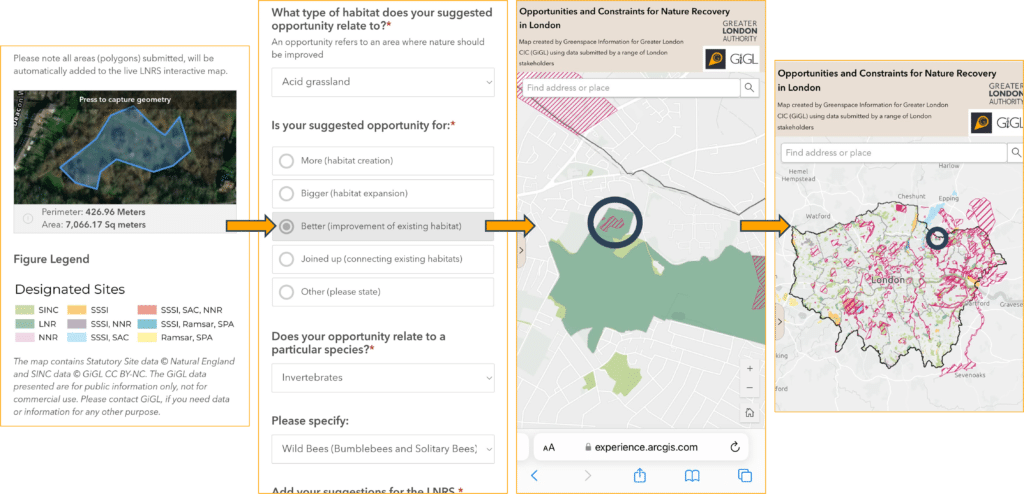GiGL is supporting the Greater London Authority (GLA) who is the Responsible Authority for London’s Local Nature Recovery Strategy (LNRS). Our involvement with the LNRS includes coordinating with local authorities to update our Sites of Importance for Nature Conservation (SINCs) and proposed SINCs data, coordinating with species experts to identify LNRS species priorities, developing resources (like the online form presented below) to capture people’s suggestions on nature recovery opportunities in London, supporting GLA-delivered workshops to help engage Londoners with the LNRS, and using our mapping to identify suitable locations for nature recovery. Below, Francis Castro, London Nature Recovery Policy and Programme Manager for London with the GLA, presents the LNRS interactive webmap and submission form created by GiGL.
The London Local Nature Recovery Strategy (LNRS), interactive map is currently live. The GLA and GiGL need Londoners, including GiGLer newsletter readers, to highlight areas which could lead to a specific habitat being better managed, restored or created. Use your local knowledge to mark the precise area in which specific habitat recovery can occur, either on the form here or on the interactive map here. Please be as spatially accurate as you can. If you have a target species in mind, please also select it from the drop-down list on the map.
The suggestions from the map may be used to inform large-scale nature recovery in London.
The LNRS is not a designation platform, nor will it provide protection status to sites – what it will do, is provide a pipeline of potential works across London, to therefore focus investment and funding. We are looking to identify specific areas, that if managed/restored/created will result in a good condition priority habitat. That could mean a parcel within an existing nature reserve or site already designated for nature, or an area that is not an existing nature reserve but may have potential to be so. Examples for potential opportunities include a wildflower meadow in a park, open mosaic habitat on previously developed land, or even new wetlands, reedbeds or ponds in an aquatic habitat. Really think about how we can encourage and support better management of your suggested sites, particularly for meadow, woodland, pond and reedbed habitats, where ongoing and continuous conservation management is fundamental to the maintenance of the habitat type and the species which rely upon it.
The example below gives you an idea of the specificity required from submissions. Here, an opportunity area for acid grassland was drawn on the map, and the “better managed” option selected as the suggested opportunity. This type of habitat requires consistent conservation management to help retain its conservation and wildlife value, so ensuring this continues, will be a priority for the area.
Please click LNRS Interactive Map (arcgis.com) to access the map and start putting forward your suggestions.

